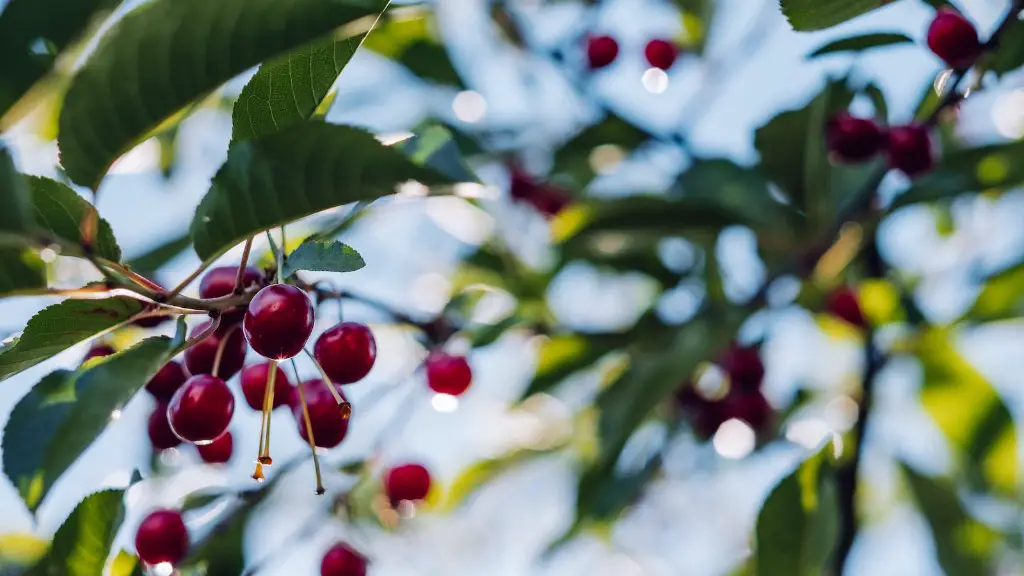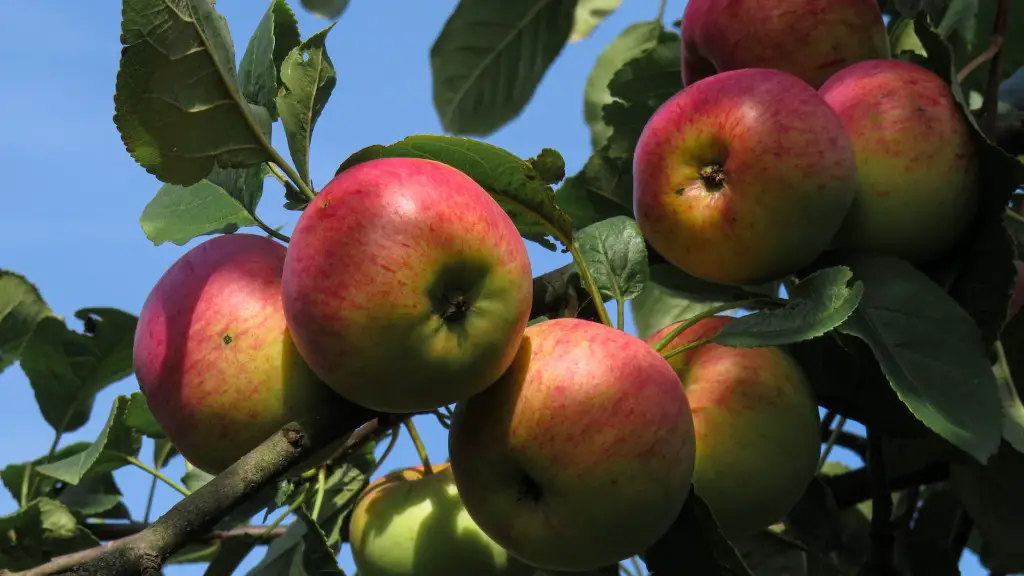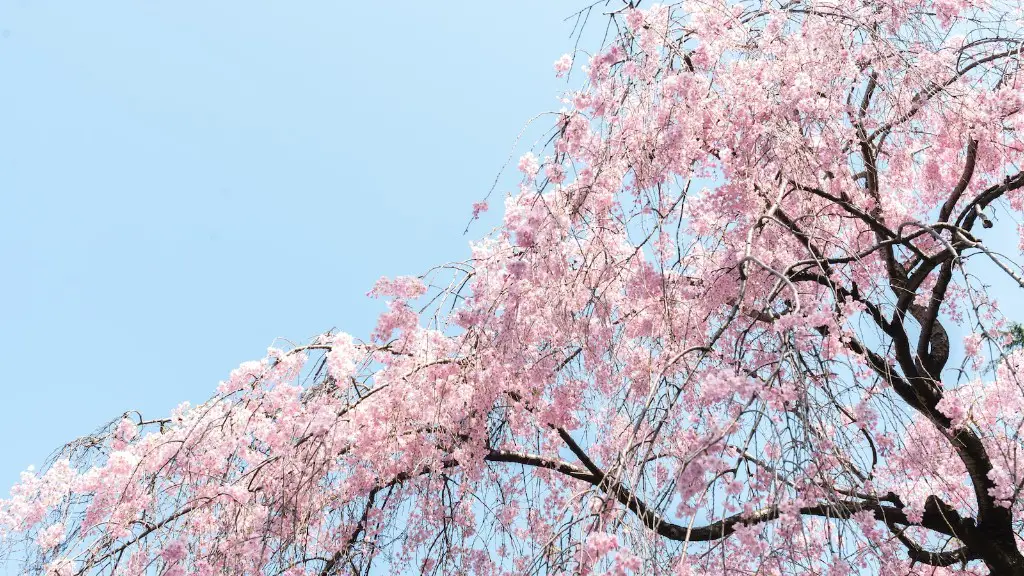Bringing a Cherry Tree Back to Life
The cherry is a small tree, often grown in homesteads and backyards. It is a remarkably hardy plant that can survive in challenging conditions, but even the best tree can find itself in danger when exposed to inclement weather or disease. When your cherry tree starts to wilt or cease producing fruit, it can be disheartening to think it can no longer be helped. However, with careful attention and the right steps, it is possible to bring your ailing cherry tree back to life.
The first step to reviving your cherry tree is to determine the cause of its poor health. Have the roots been nipped by cold winter temperatures? Is the tree suffering from a nutrient deficiency? Or is it plagued by disease? If you’re not confident in your ability to make a proper assessment, it may be best to consult a professional arborist who can diagnose and recommend a suitable solution.
If you determine that your cherry tree’s poor health is environmental in nature, there are several steps you can take to bring the tree back to life. If the cherry tree is suffering from cold damage, you should consider pruning dead and frost-damaged wood. Additionally, you can protect the tree from severe winter weather by providing adequate water and insulating the roots with organic mulch. For trees suffering from nutrient deficiencies, a fertilizer that specifically caters to the needs of cherry trees can be applied.
Disease is a common problem for many cherry trees, often resulting from fungi or insects. This is a very delicate matter and requires the help of a professional in order to properly diagnose and treat the tree. Nevertheless, there are steps you can take to prevent future outbreaks of disease. Promptly remove dead or diseased branches and foliage, and ensure your cherry tree is planted in an area that offers adequate sunlight and water, both of which can help prevent infections.
It is also important to be mindful of the changing seasons and take proactive steps to protect your cherry tree. Before spring, prune away damaged and dead branches and apply fertilizer as needed. In the fall and winter, be sure to inspect and remove any affected branches, and mulch your tree with natural materials to safeguard it from cold and wet conditions. If done diligently and in a timely manner, these steps can help ensure your tree remains healthy for years to come.
Protecting From Disease
Disease can be a serious problem for a cherry tree, and it is essential to be educated on the most common afflictions and the measures you can take to prevent or cure them. Plant disease fungi are among the most prominent threats to your cherry tree, and they can cause weak, stunted growth and even death if not treated. Insects such as aphids and scale can also cause damage to the cherry tree, leading to leaf and fruit damage.
The first step to prevention is to keep your tree in good health by avoiding nutrient-poor soils, adequate water, and proper sunlight. Additionally, inspect the area for any signs of insects. If you detect any signs of scale or aphids, spray the affected area with horticultural oil or another pesticide solution. If your tree is infected by plant disease fungi, you can use neem oil or a copper-sulfate solution to help.
It’s important to note that these treatments, while frequently effective in combatting plant disease and insect-related issues, can potentially harm beneficial insects such as ladybugs and bees, so use them sparingly and with great care. Additionally, be sure to approach any pesticide treatments with caution, wear protective clothing, and read the instructions thoroughly.
Companion Planting
If the health of your cherry tree is still a concern, consider companion planting. Companion planting is the act of planting certain plants next to each other to promote better nutrition and protection for the plants in question. By choosing companion plants with complimentary characteristics, you can create an environment that will facilitate the wellbeing of your cherry tree.
For example, an appropri
ate companion for a cherry tree is garlic, which helps to repel pests and ward off fungal infections. A good combination for a cherry tree is also roses, lilies, and other fragrant flowers because their scent will help repel disease-carrying insects. Additionally, incorporating nitrogen-fixing plants into your garden can help boost the nutritional content of the soil, resulting in a healthier, stronger cherry tree.
Overall, companion planting is an great way to help your cherry tree thrive and remain healthy. Properly selected plants will not only provide nourishment and protection, but they will also give your garden a pleasant, vibrant look.
Fertilizing the Cherry Tree
Fertilizing a cherry tree is essential for promoting optimal growth and productivity. If not done judiciously, however, it can have negative consequences on the cherry tree’s health, as it can cause excessive growth, stress, and can stunt the tree’s development.
When selecting a fertilizer for your cherry tree, look for a product with NPK levels that meet the needs of your tree. A good rule of thumb is to fertilize the tree in early spring. Once flowers appear, your tree no longer needs the additional nutrients of the fertilizer, and doing so can instead result in weakened flowers and fruit. Be sure to apply the fertilizer in the correct amount and at the correct time, and water the soil before and after fertilizing to help the nutrients reach their full potential.
Fertilizing can help improve the overall health of your cherry tree, as well as its flower and fruit productivity. However, be sure to use the right type of fertilizer, and apply it with caution to avoid damaging your tree.
Pruning and Training a Cherry Tree
The cherry tree has a strong but shapeable structure, and with proper pruning and training the tree can be encouraged in certain directions to create a beautiful result. Pruning is essential for keeping the tree healthy, as it removes dead and crowded branches and opens up the canopy for sunlight to enter.
When pruning a cherry tree it’s important to determine what kind of shape you want to create. Will the tree be short and wide? Tall and narrow? Once you decide on a shape, you can begin pruning the tree accordingly. Be sure to use sharp and clean pruning shears and work methodically from the inside of the tree outward, making sure to remove any dead or damaged branches.
Training the tree is an important step in keeping it in good health. If you’re training a young tree, you should encourage it in the desired shape by gently tying the branches with twine. This twine should be carefully monitored and potentially replaced every couple of months. Additionally, training wires looped through the arms of the tree and secured to stakes can be used to keep the tree in the desired shape. Be sure to support the tree rather than restrain it, as excessive tension can cause the tree harm.
It is possible to bring a cherry tree back to life, but it requires attention, care, and know-how. Determine the root cause of your ailing tree, take preventive steps to ensure it is robust and disease-free, and prune and train the tree with care. Applying these techniques judiciously can help your tree return to good health, and allow it to provide you with fresh fruit for years to come.



